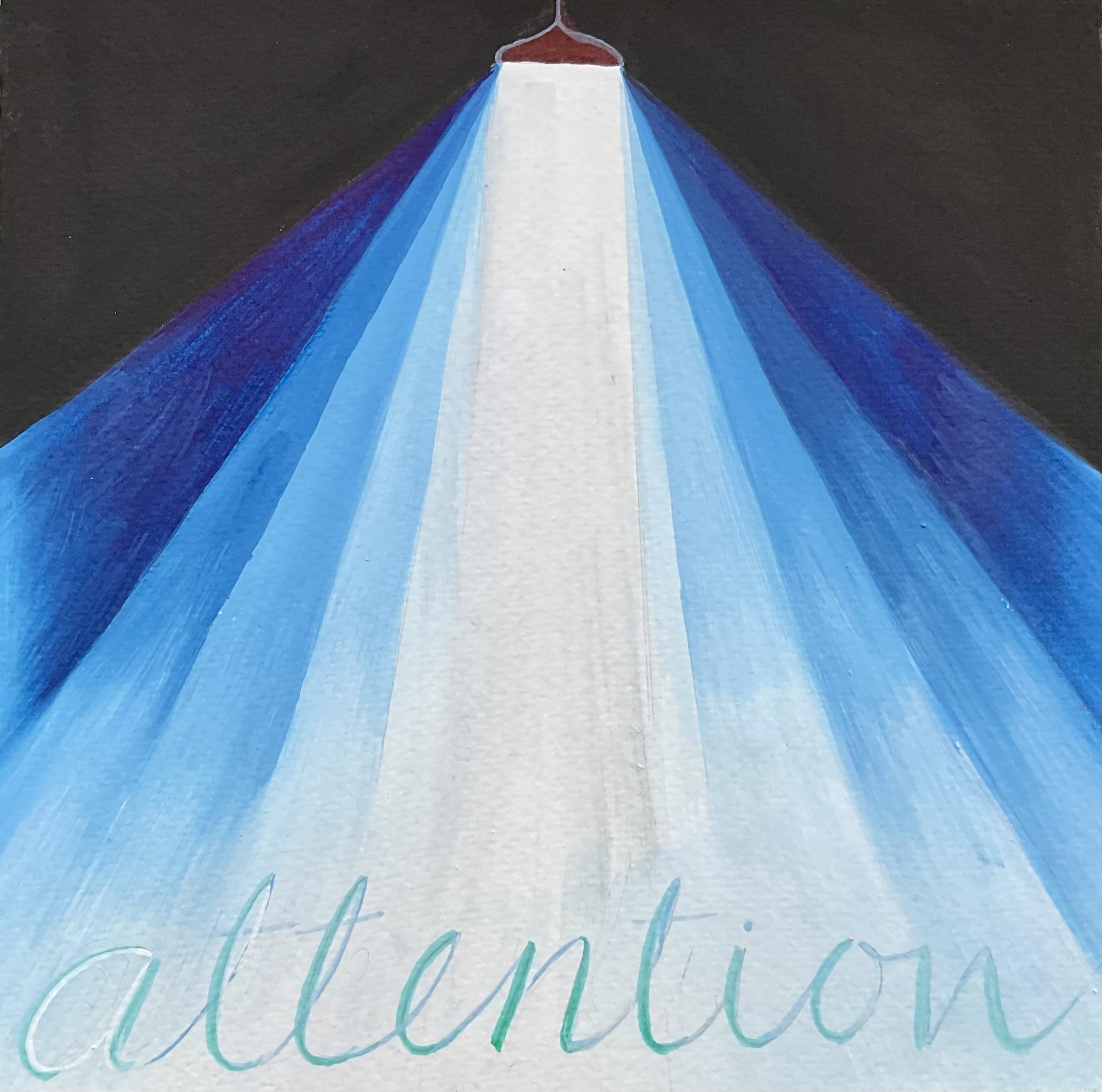Paying Attention

IMAGE OF THE WEEK
We are grateful to Rupali Bhuva for offering this hand-made painting for this reading.

Attention is thought to have evolved to solve one of the brain’s biggest challenges: There is far more information in our environment than the brain can fully process. Without a way to filter, the relentless sensory input we receive would leave us overloaded, incapable of functioning effectively. One way to think about attention is that it’s like a flashlight. It allows us to select and direct our brain’s computational resources to a smaller subset of information. We can narrow our sights onto a portion of the page while reading to ensure that the letters and our comprehension remain crisp and clear; or we can direct our attentional flashlight to a conversation partner to key in on her voice in a crowded room. At the brain level, attention works by selectively biasing sensory neural activity so that information that is attended vs. unattended shows a greater neural response.
In addition to their influence on our perceptual experience of sensory input, attention and affiliated executive control processes (such as working memory) are closely related to successful social abilities, emotion regulation, memory, decision making, and performance. Attention determines the moment-to-moment experience of our lives—how we interact, feel, remember, think, and perform. Its influence on all of these functions is why attention is powerful.
While it provides us with a strong evolutionary advantage for maneuvering around in the world, there is one big downside to attention’s powerful influence over so many information processing domains. If attention becomes compromised, so too will our ability to perceive, interact, feel, remember, and so on. This, not surprisingly, can cause problems in many areas of our lives.
For example, in one study, we asked participants to pay attention to faces that appeared on the screen one-by-one, and press a button to make categorical judgments about each face. As they performed the task, we recorded their ongoing brain activity. Every now and then, we’d present distracting images that weren’t relevant to the task, which could be negative (e.g., scenes of human suffering) or neutral (scenes of everyday innocuous events, e.g., sitting on a bus reading a book). We wanted to know if there were differences in performance and brain activity around the times that negative images appeared, compared to neutral images. Not only was task performance worse around negative (versus neutral) images, but brain activity related to perceiving faces was reduced. It was as if the attentional flashlight was compromised in its ability to focus on the faces when there were distracting negative images. This was striking because the distracting images appeared only before or after the faces, suggesting that even the memory or anticipation of negative images was potent enough to hijack attention away from the perception of faces as they appeared.
Given attention’s fragile nature, especially under intervals rife with external and internal distraction, what can we do to prevent costly attentional lapses? The simple answer: Stay focused on the task-at-hand and don’t get hijacked away by distraction. But this is not a useful mandate for two reasons. First, human minds wander between 30 to 50% of our waking moments. Second, when we wander, we are often unaware of it. Thus, since we are prone to wander without awareness, and even more so under high demand intervals, perhaps a more reasonable approach is to do what William James suggested, bring back a wandering attention over and over again.
“The faculty of voluntarily bringing back a wandering attention, over and over again, is the very root of judgment, character, and will. No one is compos sui if he have it not. An education which should improve this faculty would be the education par excellence. But it is easier to define this ideal than to give practical directions for bringing it about.” --William James (1890)
Amishi Jha is a professor of Psychology and Director of Contemplative Neuroscience, University of Miami and author of the national bestseller, Peak Mind. Excerpted from here.
SEED QUESTIONS FOR REFLECTION: How do you relate to the notion that our attention and how we process things can be easily compromised with distracting inputs that are irrelevant to the task at hand? Can you share a personal story of a time you brought back a wandering attention again and again? What helps you bring back a wandering attention?